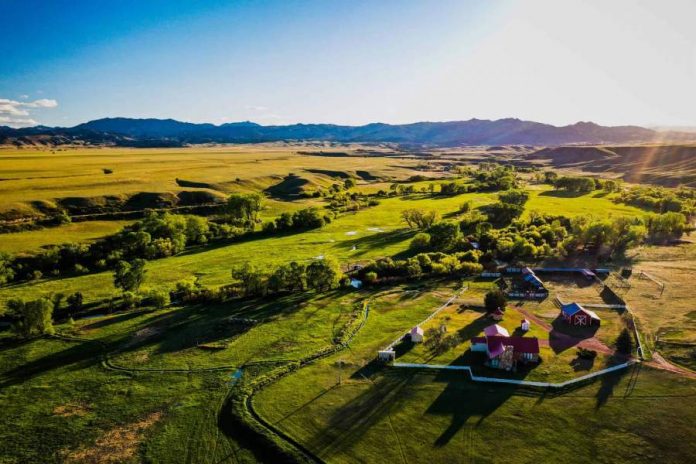Once you decide to buy a ranch, how much would you expect to pay? Similar to real estate, a ranch’s location matters. However, beyond the locale, other factors influence the price of a ranch. Factors like mineral rights, water and size, and location contribute to the worth of a ranch. We recommend hiring an experienced and educated ranch broker to help you locate the appropriate ranches for sale and help you estimate properties and solve issues.
Like every asset, the value of a ranch can be determined using various models and systems. Is there any system that can value a ranch perfectly? No, since two ranches can’t be similar. The system includes accepted and proven valuation methods, hard data, and better than getting numbers from the sky, a well-reasoned logic.
Nevertheless, the best plan of action is to analyze comparable sales information. There isn’t a general record of ranch sales, unlike commercial real estate or residential markets. It would help if you worked with bankers, appraisers, landowners, and county officials to determine the value of the land for sale.
Finding appropriate data for one-of-a-kind and high-value ranches can be time-consuming and a lengthy process. Since all the important data for our clients can mean the difference of a lot of money, we are dedicated to performing this research carefully.
Here are the top five factors which influence how much ranches can cost:
-
Water and Mineral Rights.
Water rights are among the essential factors to consider when looking forward to purchasing farmland or ranch. B3 Insight’s Kelly Bennett clarifies that water is vital to operations in a ranch, whether it gives value through recreation or agriculture. For this reason, it is crucial to understand both water rights that share the same source and water rights that deal with ranch properties.
Water rights are not owned by the individual owning the land, as water rights can be leased, sold, and encumbered separately. Water rights may be among the most valued assets of your ranch. Like water rights in mineral rights, the minerals in a landowner can be owned by another person. Minerals also add value to the land; they provide an opportunity to generate income. Some assurances the mineral owner doesn’t allow the landowner to access your land to search or extract minerals in the land.
-
Size and Location.
The more acres you purchase, the higher the cost since ranches are generally valued per acre basis. Location plays a key role in determining what the price per acre should be. If the land is adjacent to public lands like national parks or natural forest ranch value is raised. Other considerations can include access issues and privacy or nearness to the county road. Other valuable benefits include nearness to grocery stores, airports, medical services, or restaurants. Proximity to places such as golf courses, ski resorts, and recreational amenities can cost more, but the monetary worth may enhance in due time. When it comes to recording your property, it can be more liquidated.
-
Sporting features.
Factors contributing to land’s cost when purchasing a ranch include access to private fly-fishing, landowner tags, and wildlife habitat. Factors influencing sporting quality include:
- The availability of tags.
- Being adjacent to public land.
- Quantity, quality, and variety of wildlife species.
Landowner tags may be a good source of income. However, state programs vary the compensation of private lands to provide compensation forms for resources used by wildlife to landowners and support wildlife.
Tags or permits are generally accessible to family members, landowners, and, according to acreage, owned by the people designated by the landowner. When a property is in a game management region, the owner profits from the tags where it’s not easy to draw permits. Factors such as water flow and flow rates of natural water are considered when considering the value of a fly-fishing ranch.
-
Income Production.
Buyers on income and expenses use different degrees of emphasis, and income potential varies wildly among properties. Recreational buyers can be less concerned with overall productivity or agricultural production depending on attributes of a particular property and water resources, forage quality, and the amount of irrigated ground. Some buyers want to lease out the functions to local ranchers, while others choose to own cattle and bale their hay. Both of them yield income.
Irrigated land is an important feature to consider. The right to use and own water has important control on the value of a ranch; irrigated land is costlier than non-irrigated. This is because of potential income, scarcity of such prime land, and improved habitat for wildlife.
-
Conversation Value.
During sales, strong conservation values may enhance the value of a ranch. Protected natural features like pristine scenery and nature help attract new investment and sustain property values. Landowners use tools such as conservation easements to benefit from the inherent conservation values. A conservation easement involves a landowner agreeing to restrict uses to protect conservation attributes on land permanently. Financial benefits of easements include:
- Affordable ranching and farming land.
- Family heritage preservation and estate planning.
- Conservation easement tax credits in Colorado.
- Tax breaks for donations in federal income.
Final Verdict.
Several aspects determine how much it costs to purchase a ranch. A clear awareness of what decreases and increases the land’s value and your wants and needs will greatly help you while buying a ranch.






























































